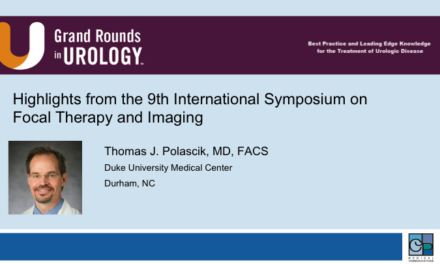Abhinav Sidana, MD, MPH, presented “Selection and Outcomes of Image-Guided, Minimally-Invasive Treatment” during the 7th Global Summit on Precision Diagnosis and Treatment of Prostate Cancer on September 21, 2023.
How to cite: Sidana, Abinhav. “Selection and Outcomes of Image-Guided, Minimally-Invasive Treatment.” September 21, 2023. Accessed Apr 2024. https://grandroundsinurology.com/selection-and-outcomes-of-image-guided-minimally-invasive-treatment/
Selection and Outcomes of Image-Guided, Minimally-Invasive Treatment – Summary
Abhinav Sidana, MD, MPH, aims to identify key selection criteria for image-guided minimally invasive treatments, also known as focal therapy, for prostate cancer. Dr. Sidana begins by noting that the use of focal therapy for prostate cancer treatment has become widespread in the past decade.
Dr. Sidana then addresses current EAU and NCCN guidelines for focal therapy. He highlights the lack of guidelines specific to focal therapy, and notes that the medical community has been trying to address this deficiency in recent years.
Dr. Sidana concludes by summarizing current best practices regarding appropriate imaging modalities for screening, appropriate biopsy strategies, and optimal characteristics for determining focal therapy candidacy. He highlights the importance of the correct selection of energy modality in treating prostate cancer, noting that not every surgeon will have access to all the available energy modalities.
The Global Summit on Precision Diagnosis and Treatment of Prostate Cancer is a unique multi-disciplinary forum organized to inform the key health care stakeholders about the emerging advances in clinical case and research and create a consensus-based vision for the future of precision care and educational and research strategy for its realization. The mission of the Summit is to fill the currently existing gap between the key experts of in vivo imaging, the world authorities in the in vitro fluid- and tissue-based molecular diagnostics, including genomics, and thought leaders in the development of novel observation strategies (e.g., active surveillance, or AS) and therapeutic interventions.




